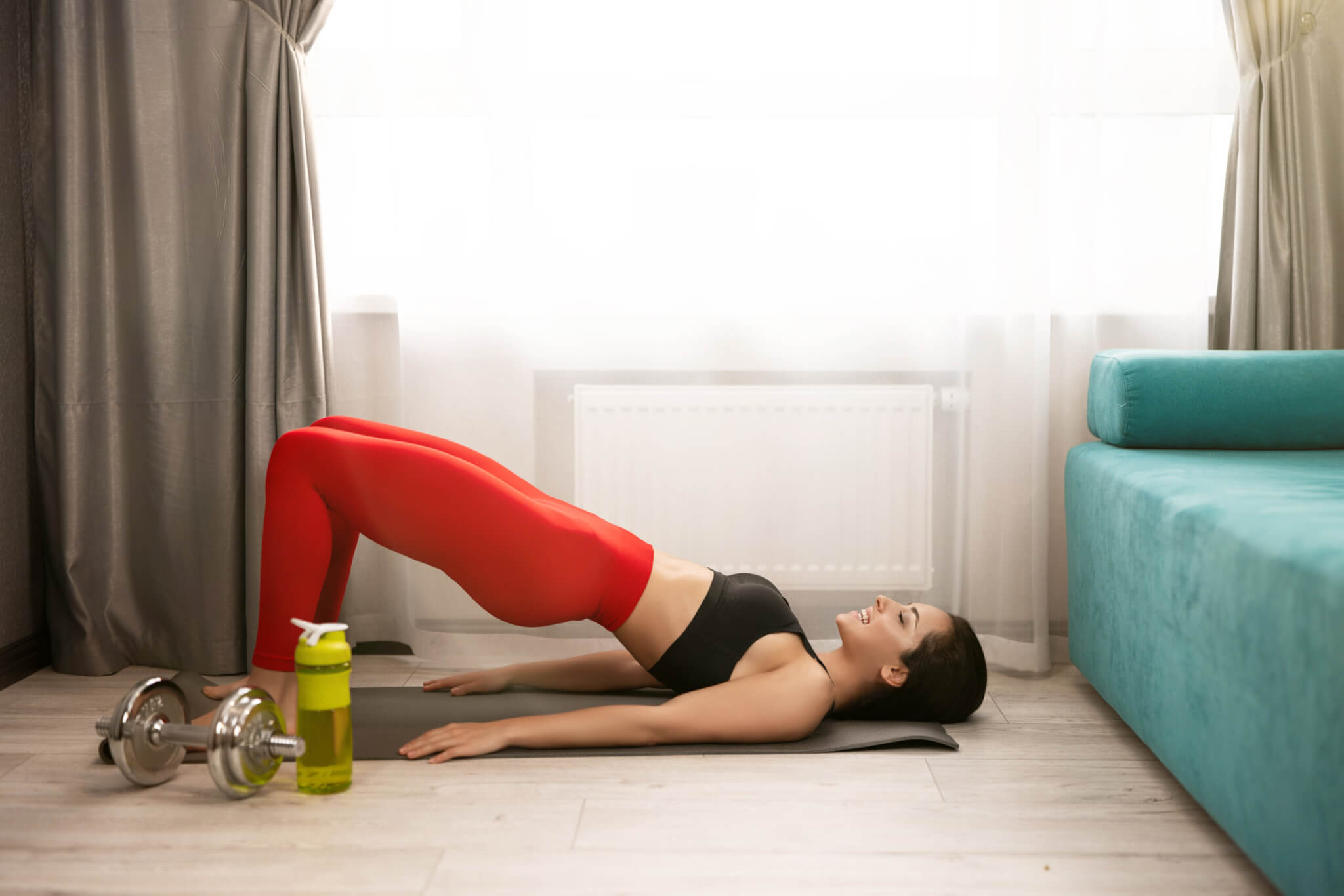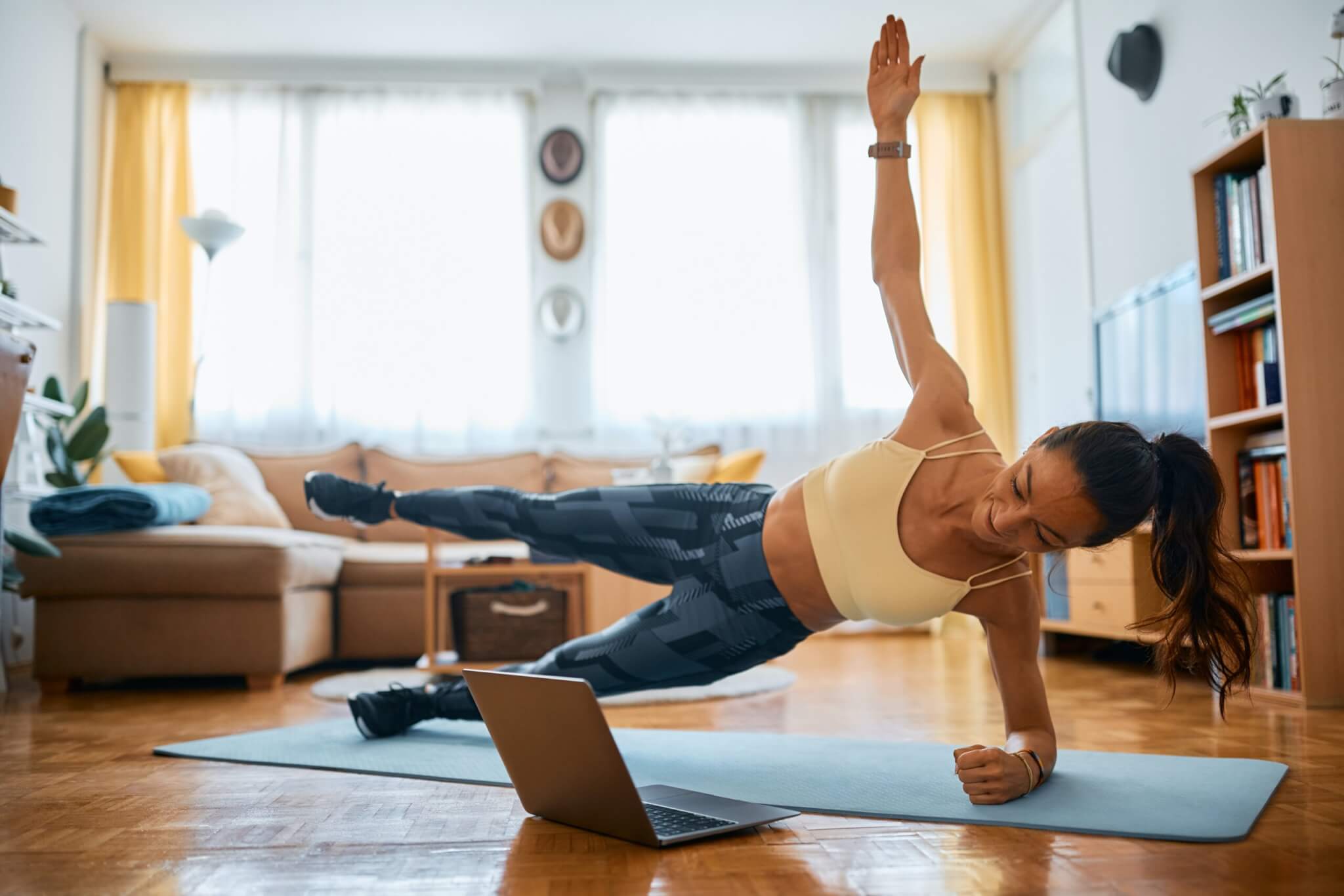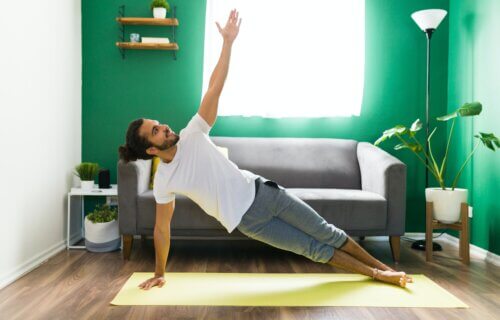Whether you work remotely or travel to an office, your body needs to move – often. Sitting hunched forward at a desk all day creates poor postural habits. For that reason, many fitness professionals view sitting as the new smoking. Beyond creating poor habits, sitting is not helping you to get blood flowing, and blood flow is not only invigorating but also healing. Many aches and pains go away with consistent blood flow to muscles, so getting up and moving often is vital to your overall health.
To help you move and build strength, I recommend these three simple exercises you can perform right at your work desk.
Exercise 1: Hip Thrust
There are two things I focus first on with new clients: building glute strength and building core strength. Why? Both of those things help to protect your back, and as we all know, back injuries can be debilitating.
This simple exercise will build those glutes in a hurry if you’re consistent in doing it multiple times per week. There are many variations of this exercise, some using a bench, some a barbell, some a Swiss Ball, but for this variation all you need is yourself and a floor. To perform this exercise:
- Lay in a supine position (back down) on the floor
- Bend your knees so that your feet are flat on the floor
- Either stretch your arms out to the sides or cross them on your chest
- Drive through your heels to raise your hips until they are locked out
- Pause a couple seconds at the top position, squeezing your glutes
- Slowly lower your hips back to the floor

Repeat this exercise for three or more sets of fifteen to twenty reps. If you’re brand new to exercise, aim for two sets of twelve to fifteen reps and increase your total sets and reps over time.
Exercise 2: Side Planks
Commonly cited by physical therapists as the number one cause of back injuries is lifting and twisting (think shoveling). Yes, our spine is made to twist, but if you’re lifting a heavy load and start to twist mid-lift, you may be setting yourself up to visit a physical therapy clinic.
Obliques help you twist and turn; they also help to stabilize your spine during movements such as squats and lunges. The issue is that when many people go about doing core exercises, they only think about six-pack abs, or rectus abdominus, and forget about the obliques. It’s a big mistake.
To help you strengthen your obliques and avoid injury, exercise number two is the side plank, which can easily be performed right next to your work desk. Again, you do not need any equipment for this exercise, just your body and a little space. And to be clear, do train rectus abdominus as well, you don’t want to only focus on obliques for your core exercises.
Again, there are many variations, but to perform a basic bodyweight side plank:
- Lay on your side on the floor
- Prop yourself up on your elbow and forearm with a 90-degree bend at the elbow
- Either stagger your feet or stack them one on top of the other, the latter being more challenging
- From here, raise your hips and hold

Imagine a straight line from the top of your head through your shoulders, hips, knees, and ankles. No part should be out of alignment. If holding the top position for time is too challenging at first, simply raise and lower your hips for reps. A cue I give clients is to keep trying to elevate your hips even when at the top of the position. This really gets the obliques (underside) firing. Aim for the same goal here, three or more sets on each side for either time or reps. Remember, these set and rep recommendations are general. Feel free to adjust depending on your level of fitness.
Exercise 3: Reverse Lunge
Research shows that strong legs may be the key to a strong heart. It makes sense since training bigger muscle groups forces your body to work that much harder. So for heart health and many more reasons, do not skip leg day.
Again, we will focus on a bodyweight version of this exercise so that you can do it right next to your work desk. To perform this exercise:
- Stand tall with your feet about hip-width apart
- Initiate the movement by stepping one foot behind and bending both the back knee and the front knee simultaneously.
- Your end position should place your front knee at 90 degrees and your back knee just shy of touching the floor
- From there, drive through your front foot (mostly heel) to stand your body back up to the start position

You should feel your lead leg (quad, hamstring, and glute) working. Your back leg should only be lightly supporting your body weight and helping you to balance. Be sure to keep your chest tall as you step the leg back and lower – do not hinge forward and/or rest your hands on your front leg.
You can either alternate the lunges or do a set number of reps on one side before switching to the other. The ladder will be more challenging. Again, you’re looking for at least three sets per side of ten to fifteen reps, but adjust as needed.
Final Thoughts: How Often Should You Perform These Exercises?
You can perform these three exercises two to four times per week, but they should be incorporated into a regimen that targets all body parts at least once per week. These three movements do not comprise a full exercise routine; they are, however, movements you can do throughout your day to build strength and get blood flowing. They’ll also help to bring you back to life after sitting for extended periods.
Keep in mind that these movements will build strength if you’re new to exercise. If you’re more seasoned, you’ll want to try some more challenging variations of the movements.
You may also be interested in:
- What is intuitive eating?
- Best Exercises For Weight Loss
- Which Whey Protein Powder Is Really Best For Your Body?
